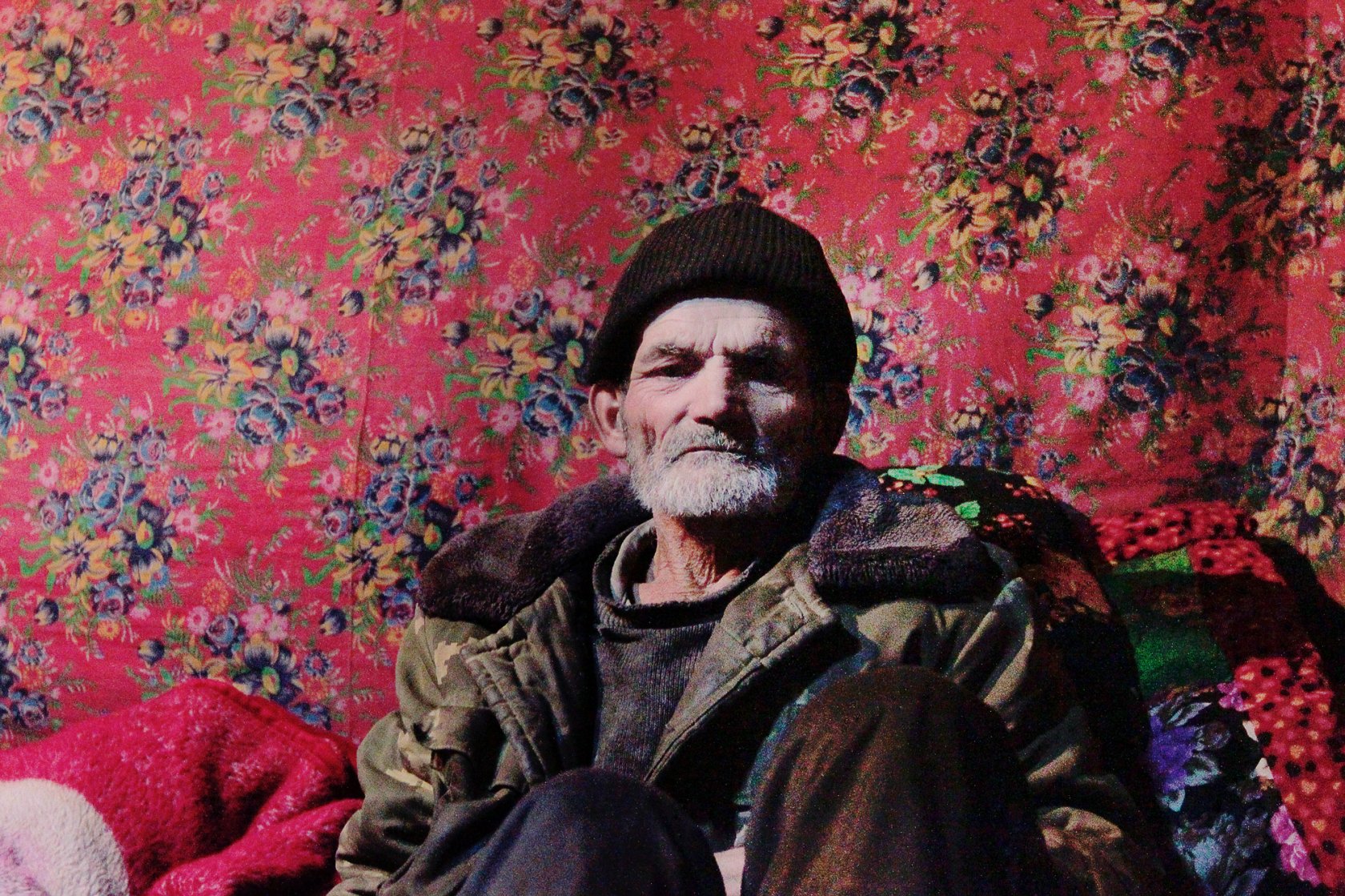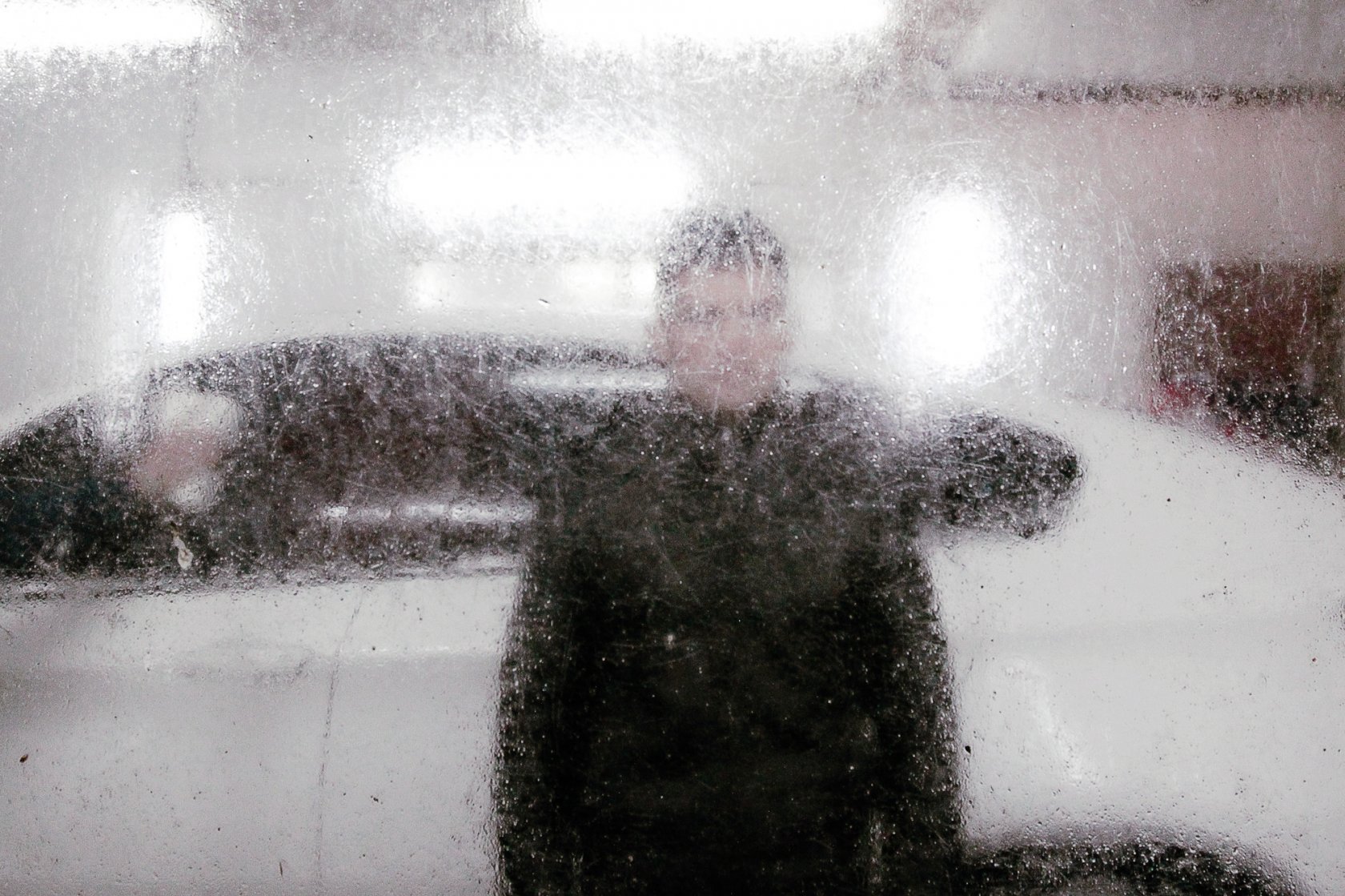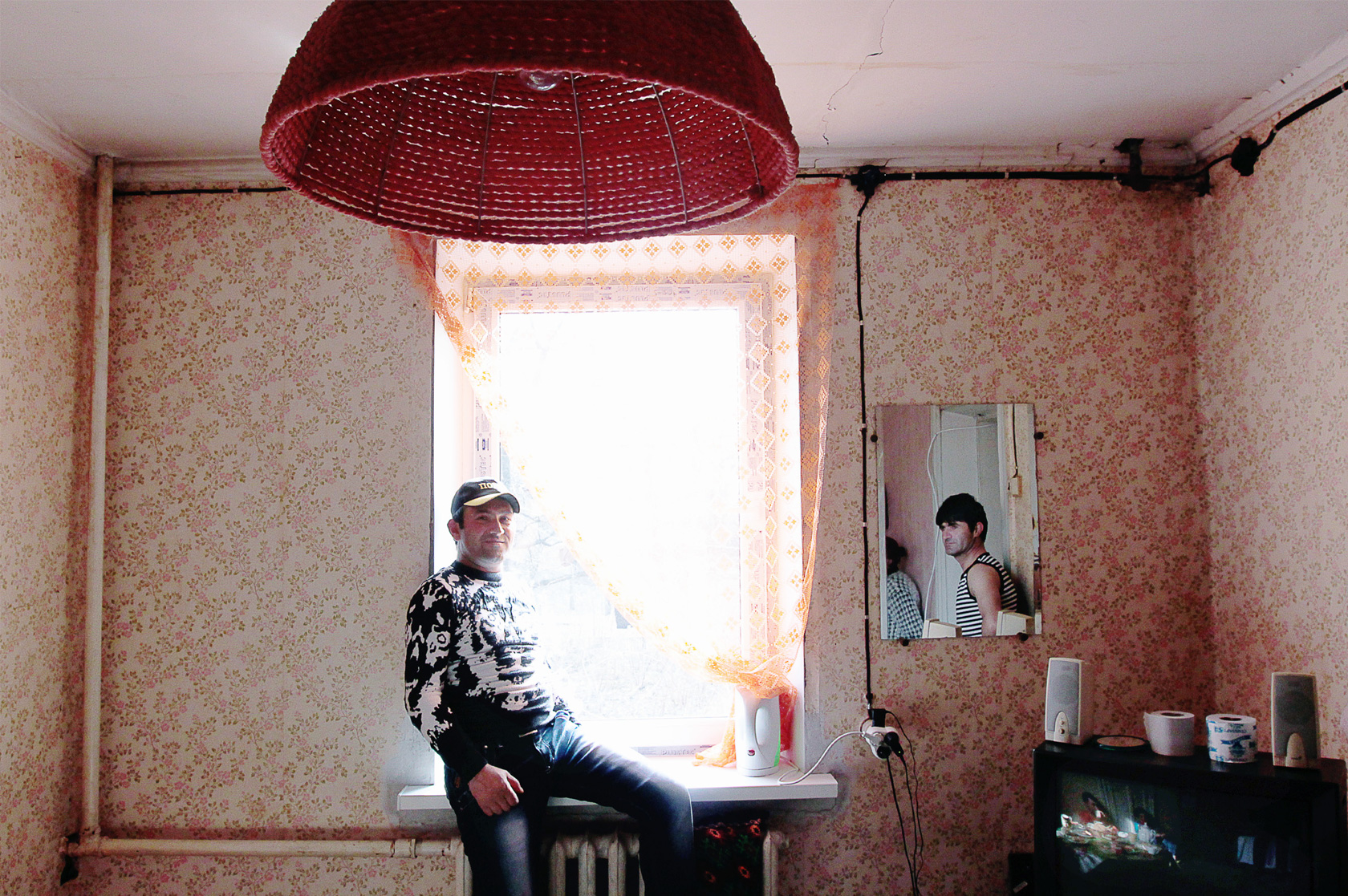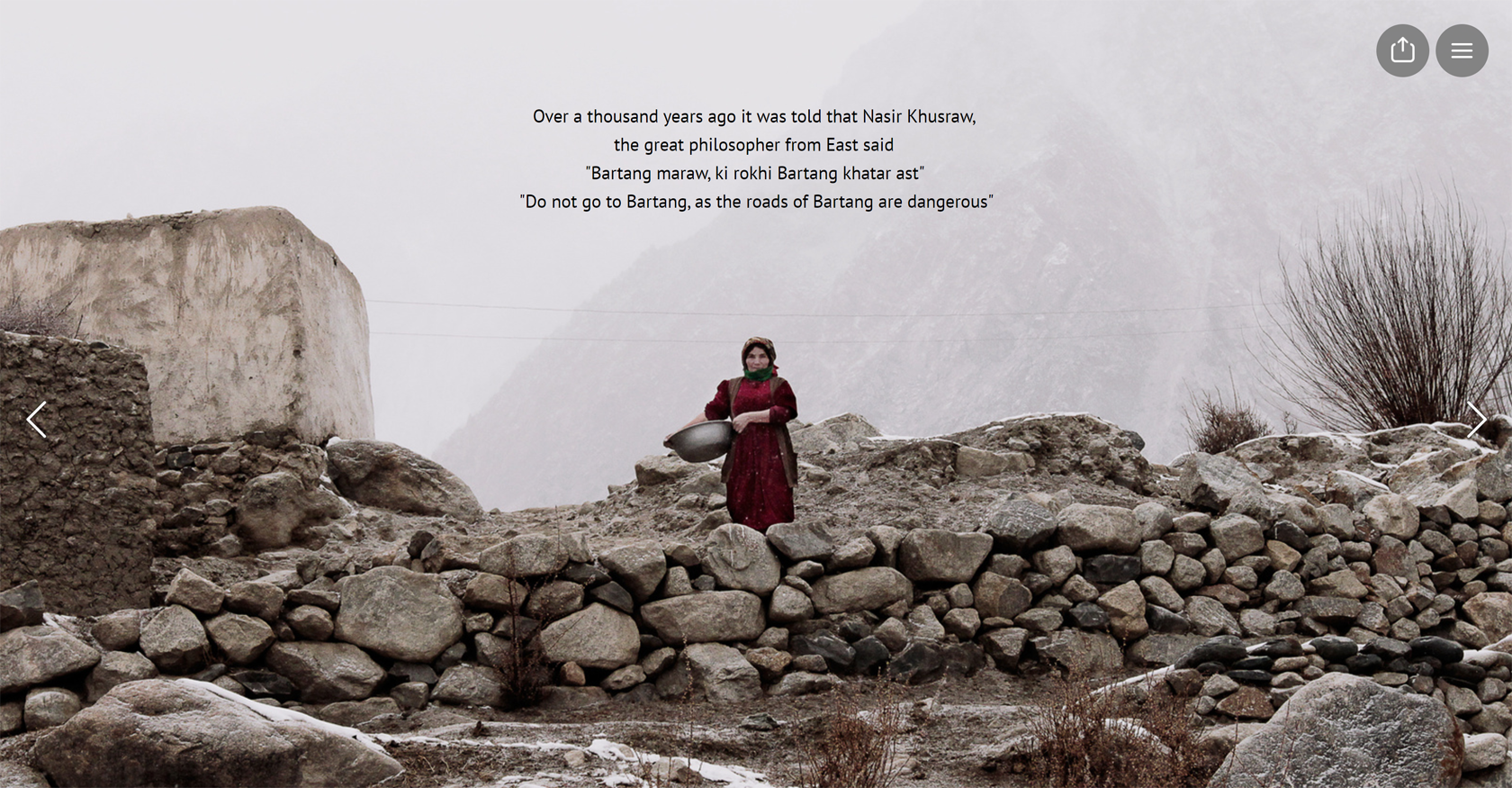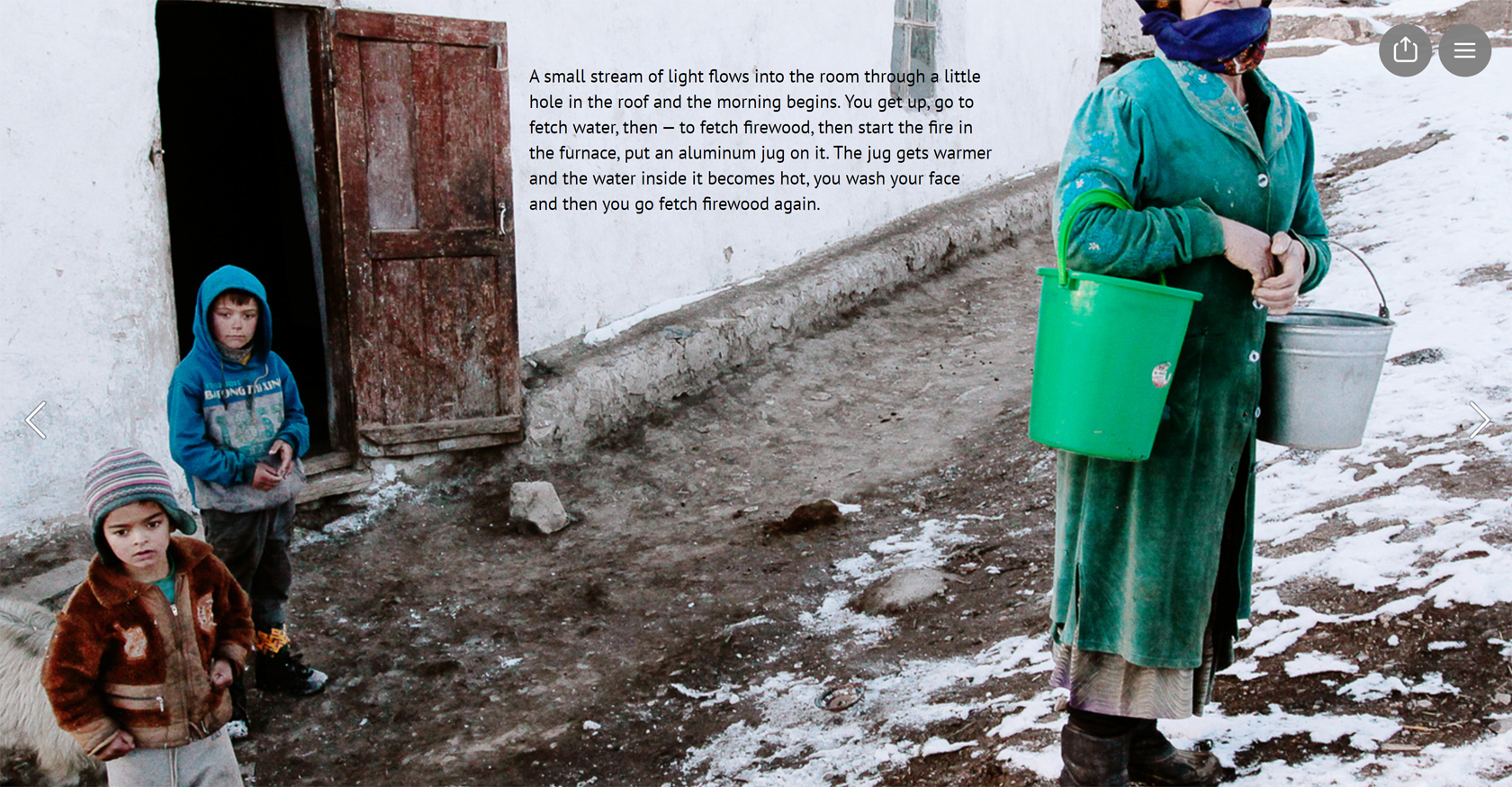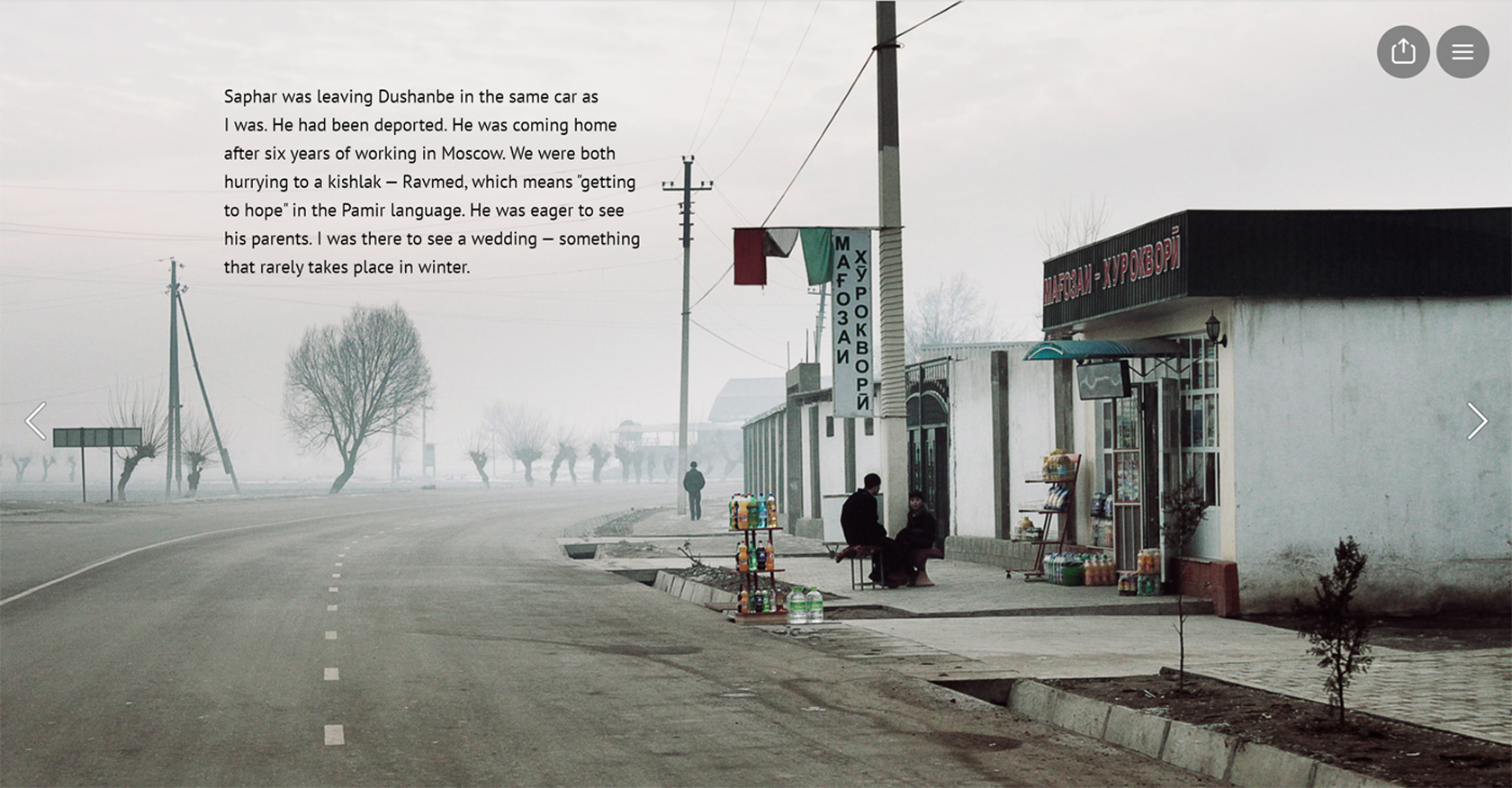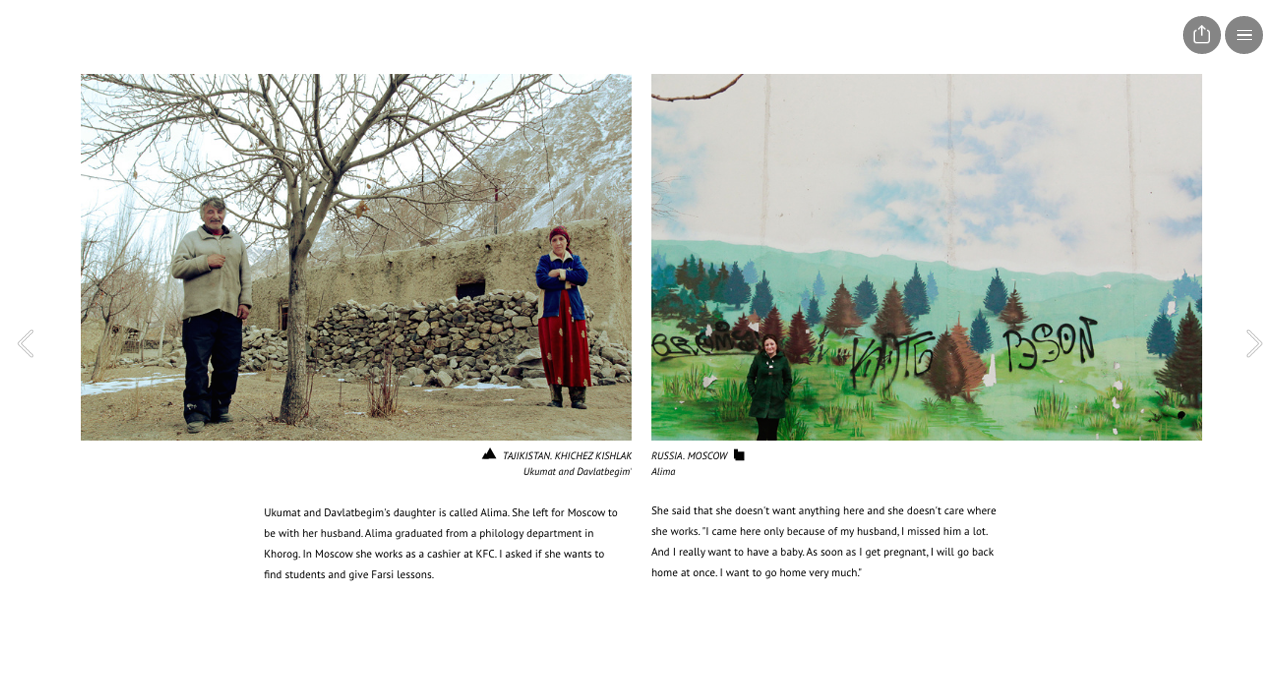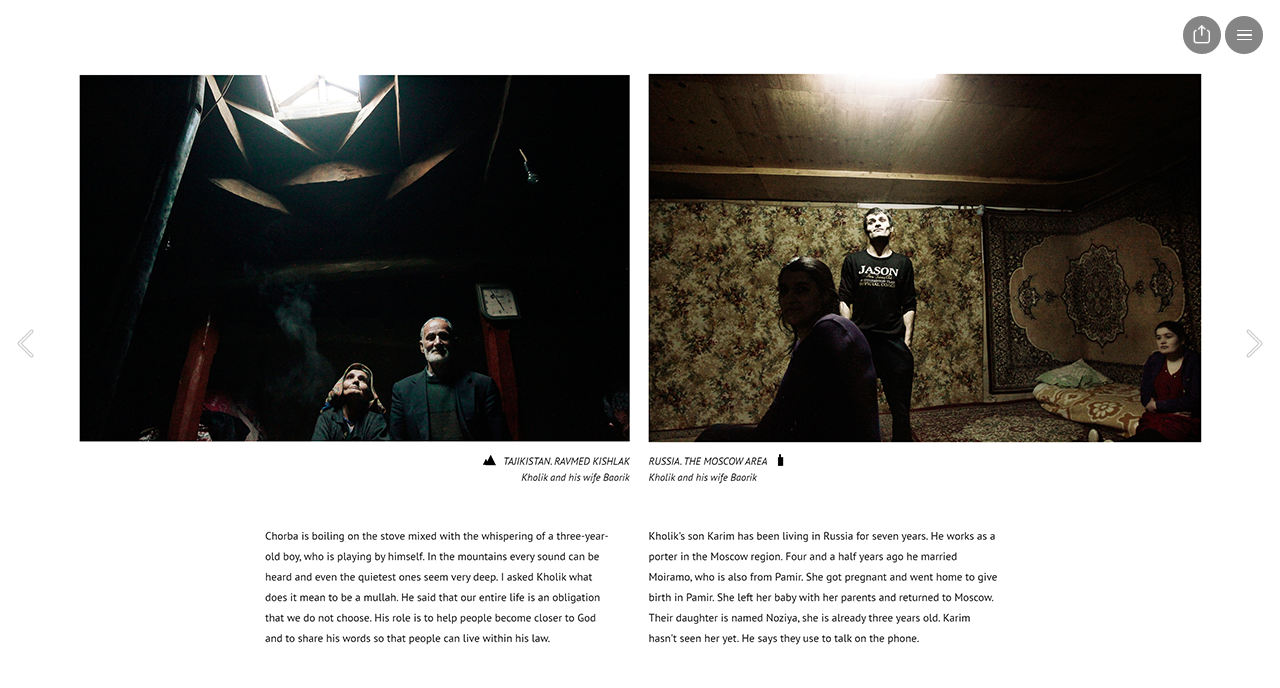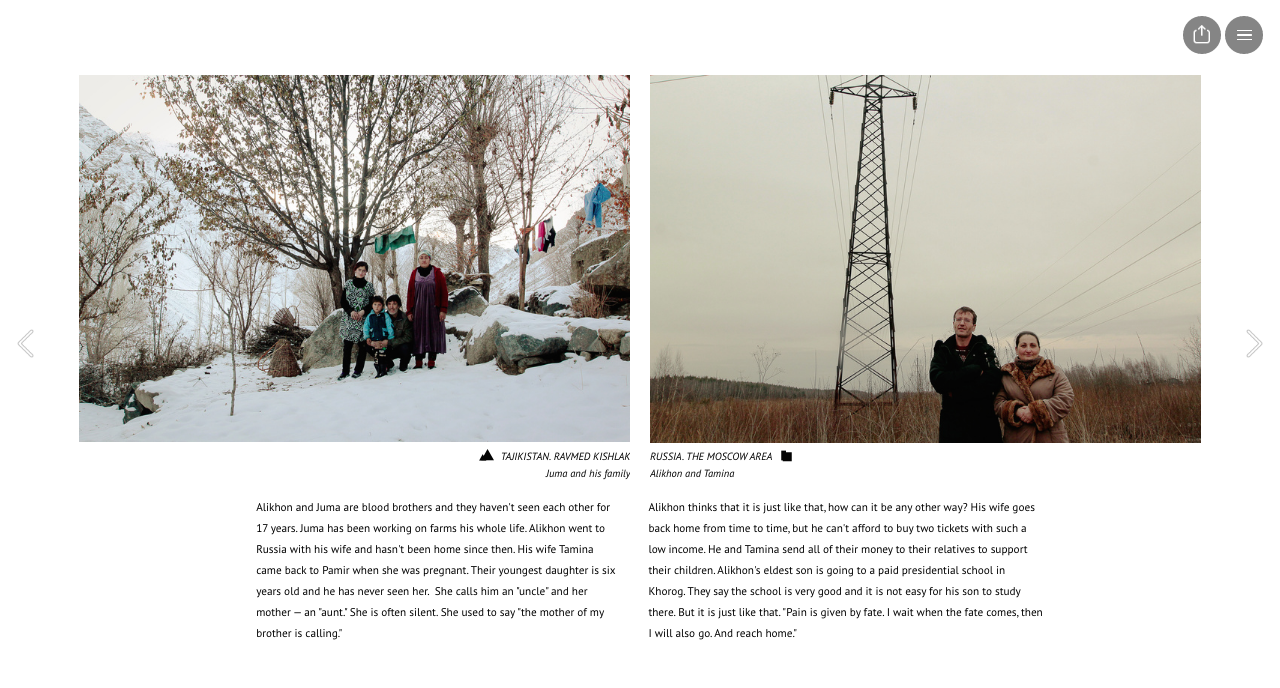IN THE COLD
A photo documentary about 24 families of labour migrants living on two sides of the divide – here in Russia and in their homeland of Tajikistan
IN THE COLD
A photo documentary about 24 families of labour migrants living on two sides of the divide – here in Russia and in their homeland of Tajikistan
In our country, it is common to think that migration strangles our cities, our schools, and our metro carriages. Migration is a flood, pouring over the brink to drown us all. But, in reality, the flood is not where migrants end up, but where they come from. The scale of migration only really becomes tangible when you find yourself at its source.
In our country, it is common to think that migration strangles our cities, our schools, and our metro carriages. Migration is a flood, pouring over the brink to drown us all. But, in reality, the flood is not where migrants end up, but where they come from. The scale of migration only really becomes tangible when you find yourself at its source.
How the project idea was born

Ksenia Diodorova
Project author, co-founder of Gonzo Design
I remember a Tajik family used to work in my building foyer. They lived in a tiny room next to the elevator. The husband and son cleaned the courtyard, and the wife cleaned the stairs. She had a remarkably beautiful face, tired and heavy, but very calm. A kind of beauty that expresses the aesthetics of humility. That's when I decided to photograph a series of portraits of women labour migrants. Without overalls, tools, or timetables, without all these attributes, just as women. I wanted to show migrants not as we see them in the constant flow of the metropolis. I wanted to show their "face". But I didn't manage to take her picture, the family soon moved out, and the foyer returned to its usual dirty state.
Project process
Ksenia photographed the parents of migrants in Tajikistan and their children in Russia. In the paired photographs, people torn apart by migration finally meet again, while we find out their family stories.
Two years later I went to the Pamir Mountains in Tajikistan to take photos of the Bartang valley and its inhabitants. I realised that I had to start here, from the roots. Because man is made up of earth and blood – his house and his parents. I lived in the valley for a month, moving from village to village, living in one house then another. I thought that it would take some time for me to find families that had been affected by migration. But it turned out that almost every household had a close relative that had gone to Russia in an attempt to earn money. The scale of migration exceeds any tangible limit.
Returning to Russia, I began to seek out and photograph the relatives and children of those I'd met in the Pamirs. This resulted in a double-sided narrative through which we can learn a little more about migrants from the beginning – see where they were born, how they grew up, who their parents are, what their children draw, what they believe and what they dream about.
Returning to Russia, I began to seek out and photograph the relatives and children of those I'd met in the Pamirs. This resulted in a double-sided narrative through which we can learn a little more about migrants from the beginning – see where they were born, how they grew up, who their parents are, what their children draw, what they believe and what they dream about.
Every day in the metro, in the bus, in the shop, in the courtyard, we are surrounded by people with similar faces, about whom we know nothing. Here in Russia, they get new names: Dima, Andrei, Misha – and begin calling themselves these even among themselves.
Behind this person who speaks bad Russian, believes in Allah and prays five times a day, there, in the mountains, stand his elderly parents; they fire a wood stove and cook chickpeas. The washing in the yard has been drying for three days, water dripping from it freezes. In the corner a six-year-old girl plays with a pink balloon, she's never seen her father because she was born here in the Pamirs. He's never seen his daughter because he works in Russia.
Project structure

1. ONLINE FORMAT
Multimedia longread

2. PRINT FORMAT
Author's edition in Russian and English

3. PHYSICAL FORMAT
Exhibitions in St. Petersburg, Moscow and other cities
1
ONLINE FORMAT.
Multimedia longread
Multimedia longread
The online version of the project unites all the documentary material collected over several months in Tajikistan and Russia in the form of a multimedia longread – photographs, audio, video and text.
View the project
Textual component
The project's textual component is based on the author's diaries, as well as transcribed audio and video interviews with the featured individuals.
Visual photo sequence
This forms the core basis of the documentary narrative because it is here that those living in the Pamirs and their relatives working in Russia "reunite".
Food for thought
Several slides show quantitative and qualitative data that gives an overview of the current economic situation in Tajikistan and helps understand the root causes of migration.
Video material
The narrative's linearity is balanced by the insertion of video fragments, giving an opportunity to immerse yourself in the life of the characters through watching short clips.
2
PRINT FORMAT.
Author's edition in Russian & English
Author's edition in Russian & English
We believe that this book can give anyone who is willing to look and listen, a new perception and attitude not only towards labour migrants but also to people in general.
Book features
The spine is made of fabric printed with multi-coloured scarf patterns that have in their own way, become a symbol of the project – bringing warmth to a book with a cold title. Such scarves were worn by everyone in the Soviet Union. In the Pamirs, they are still worn now.



Book structure
The book includes about 200 photographs, as well as the author's text about the traditions of the Pamir people, their culture and the stories of those families who became the protagonists of this project. It also contains some informative illustrations and QR codes.









QR codes and illustrations
In addition to the usual photobook content, there are QR codes next to the photos, each of which leads to a small video, elaborating what is happening in the image. The publication also contains illustrations with a map of Tajikistan's borders at different times and a detailed diagram of a typical Pamir household.
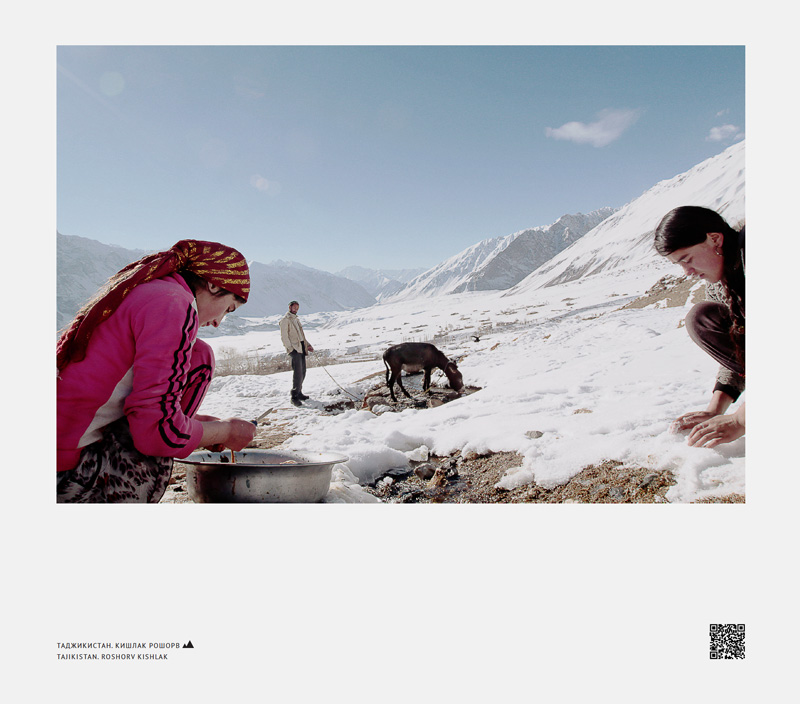
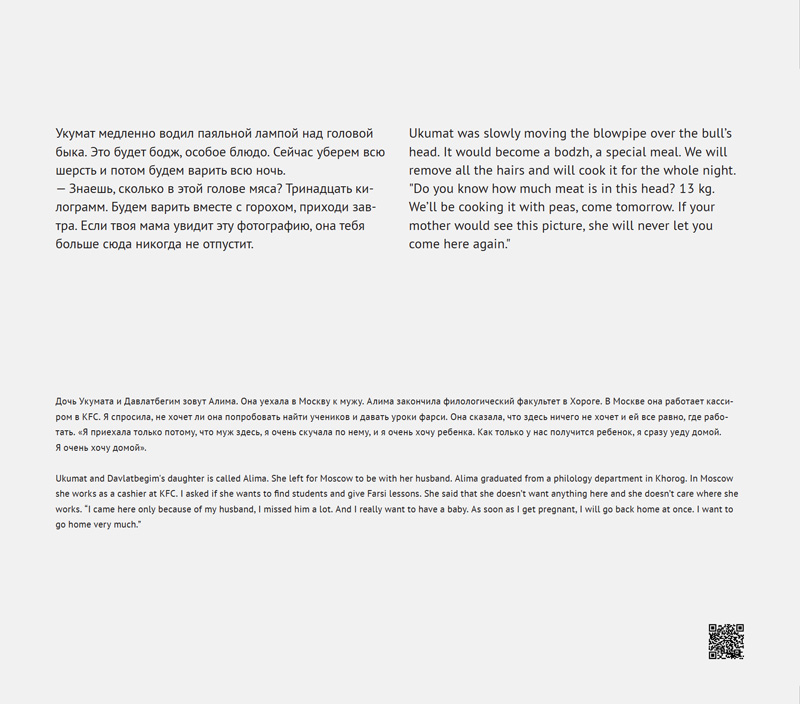
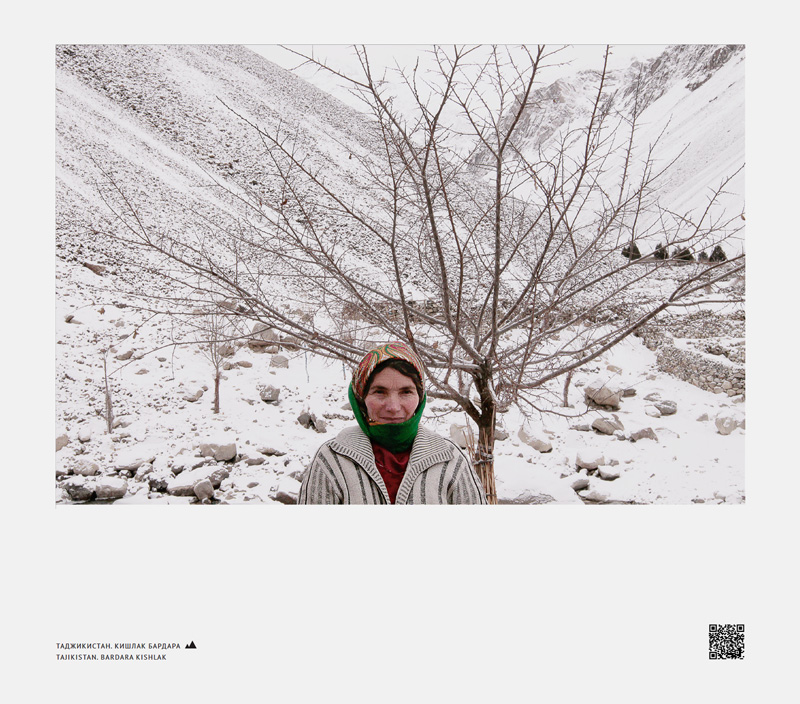
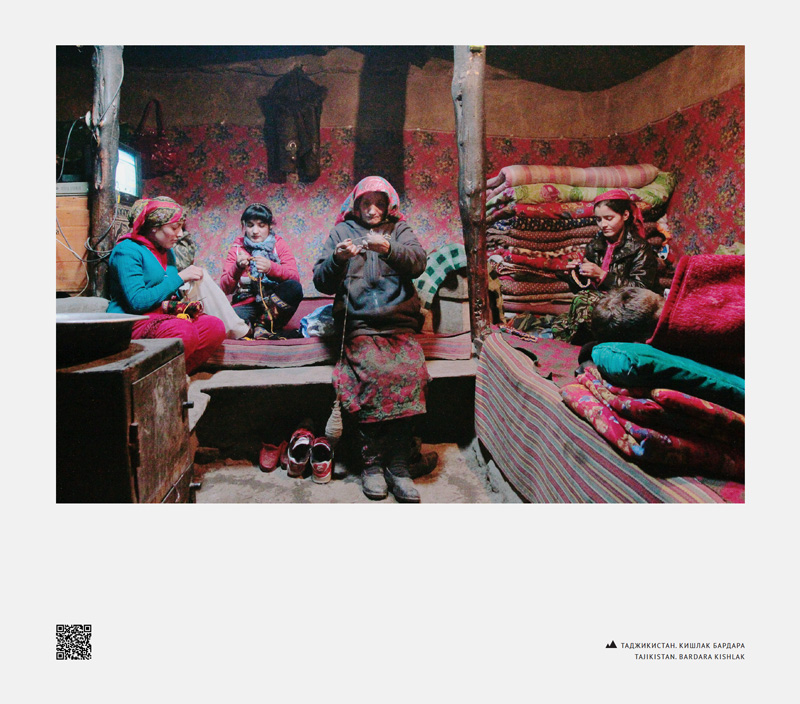


Crowdfunding campaign
In order for the book In The Cold to be printed, 243 sponsors donated 374,000 roubles (11,500$) on Boomstarter over 2 months.

Returning the book to the Pamirs
In the Cold was published in autumn 2014, and in the winter it arrived where the story began – to the Pamirs. There, copies of the book were given out to those featured in the publication, with photographs of their sons and daughters working in Moscow and St. Petersburg inserted in special pockets. So, the residents of the Bartang valley, at least managed to see in photographs the faces of their loved ones, who generally aren't able to visit, unless they are deported. On the return journey, however, the load was no lighter: Ksenia carried back gifts from Tajikistan to the children living in Russia and gave them out photos of their homeland and relatives. The circle closed.
3
PHYSICAL FORMAT.
exhibitions
exhibitions
The Pioneer cinema
25.07–15.08.2014 (Moscow, Russia)
The Stages Loft-project
18.09–15.12.2014 (St. Petersburg, Russia)
GogolCenter
07.12–21.12.2014 (Moscow, Russia)
CortonaOnTheMove
16.07–27.09.2015 (Cortona, Italy)
Centre of modern art
21.10.2016–21.12.2016 (Kaliningrad, Russia)







Result
As a result, there were several dozen publications in various media, the project was much written about, the author was interviewed, it stirred up discussion online. It's very heartwarming (and that is what's key) that In The Cold was supported by that crucial number of organizations and individuals, without whom there would not be so much warmth as a result.
Publications

The Moscow Time

Voima Magazine
In the Cold (a printed article written by Kerttu Matinpuro)

Sergey Maksimishin
Photographer
There is a wonderful photographer from St. Petersburg Ksenia Diodorova. She created a fantastic project, called In The Cold. She travelled to a remote village in Tajikistan, which gets cut off in the winter, and lived there throughout this entire isolated period for a month. She took photos and brought them to these Tajiks' children in Moscow, who are migrant workers there, and photographed them as well. Ksenia is great, everyone helped her out, she put a lot of work into it. It was a sort of response to all these groaning photographers – complaining that no one needs them, and no one prints them. She found a brilliant way around this, demonstrating that instead of crying you just need to get up and act. If you want to get something, you have to give something first.

Yuri Molodkovets
Photographer-artist of the State Hermitage
Ksenia Diodorova's project In The Cold is a unique example of depth and variety of meaning from initial idea to its embodiment. Her individual approach to the visual content of each image and their conformity to the general style results in an impeccable photo album with all the attributes of modern typography. This is not only a story about a small people lost in the big mountains and in big cities, this is the personal story of the Author, in which she is present at all levels, and fills them not only with beauty and emotion but also actual deeds, that are sorely lacking in our world today.
Resonance of the online publication
— The project was named one of the top dozen readymags of 2014.
— 70 000 views of the project in its English and Russian versions.
— 70 000 views of the project in its English and Russian versions.

Contributors












* THANK yOU (IN PAMIR LANGUAGE)
KOLOGH*
WE EXPRESS OUR DEEPEST THANKS FROM THE HEART TO ALL THOSE FAMILIES WHO TOOK PART IN THIS PROJECT. LET LOVE AND PEACE BE WITH YOU
Idea, photos, texts, design
Ксения Диодорова
Design, layout
Aleksei Poleukhin
Illustrations
Polina Faskhieva
Texts
Tokhir Kalandarov, Igor Larin, Yuri Molodkovets
Editing and proofreading of the texts in Russian
Yulia Alekseeva
Editing and proofreading of the texts in Englisk
Marco North
Interpretation
Olga Rudneva
Consultant
Tokhir Kalandarov
Special donors of the book
Alexander Smirnov, Georgiy Strakhov
Ксения Диодорова
Design, layout
Aleksei Poleukhin
Illustrations
Polina Faskhieva
Texts
Tokhir Kalandarov, Igor Larin, Yuri Molodkovets
Editing and proofreading of the texts in Russian
Yulia Alekseeva
Editing and proofreading of the texts in Englisk
Marco North
Interpretation
Olga Rudneva
Consultant
Tokhir Kalandarov
Special donors of the book
Alexander Smirnov, Georgiy Strakhov
In the Cold
LIKE, SHARE




